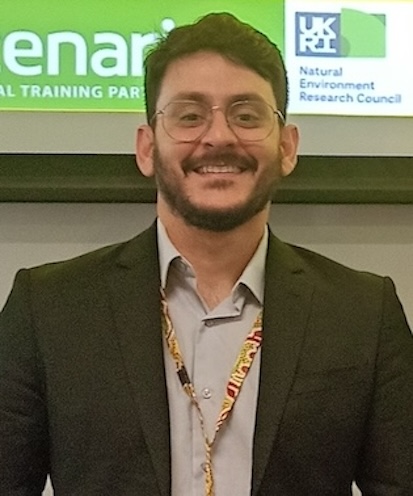Vitor Lavor

-
Postgraduate Research Student
Areas of interest
- Airborne infection risk
- Flow and pollutant dispersion in urban areas
- Built environment design and health
- Machine learning and data-driven approaches
Postgraduate supervision
Vincent Luo (University of Cardiff / University of Reading)
Sue Grimmond (University of Reading)
Omduth Coceal (University of Reading)
Research centres and groups
Energy and Environmental Engineering Research GroupResearch projects
Airborne infection risk in complex urban environments: modelling, mapping and mitigation
Usually, outdoor environments are assumed to be safe from airborne disease transmission due to sufficient wind dilution. However, the airborne transmission risk is largely unknown for dense urban environments where the wind dilution capacity is significantly reduced, especially during outdoor crowded events such as public protests.
The widely used 2-m physical distancing guideline is not sufficient to apply in dense urban environments where a tempo-spatial variability of various environmental variables (e.g. wind, air temperature and humidity) exists. Such dynamic outdoor environments will significantly change the dispersion, evaporation and eventual fate of expelled droplets in air, and therefore impact the physical distancing safety threshold. A better understanding of how infectious disease (e.g. COVID-19) is transmitted in urban environments could help to determine the safe physical distancing threshold in the more realistic social contexts where people routinely interact.
My project is funded by NERC Scenario DTP (https://research.reading.ac.uk/scenario/our-students/)
Background
I hold a BSc in Chemical Engineering and an MSc in Environmental Engineering from the University of Espirito Santo (Brazil). My MSc dissertation studied numerical simulations of atmospheric dispersion of pollutants emitted from continuous releases in urban arrays using Large Eddy Simulation (LES). During my MSc, I also collaborated on a research project about the emission, dispersion and nuisance of odour gases released from a steel-making company.
Before starting my PhD, I had experience working as a data scientist and was able to collaborate with the inclusion of machine learning topics in a chemical engineering course at the University of São Paulo.
Websites/blogs
ResearchGate: https://www.researchgate.net/profile/Vitor-Lavor-2
Personal Webpage: https://vitorlavor.com/
LinkedIn: https://www.linkedin.com/in/vitorlavor/